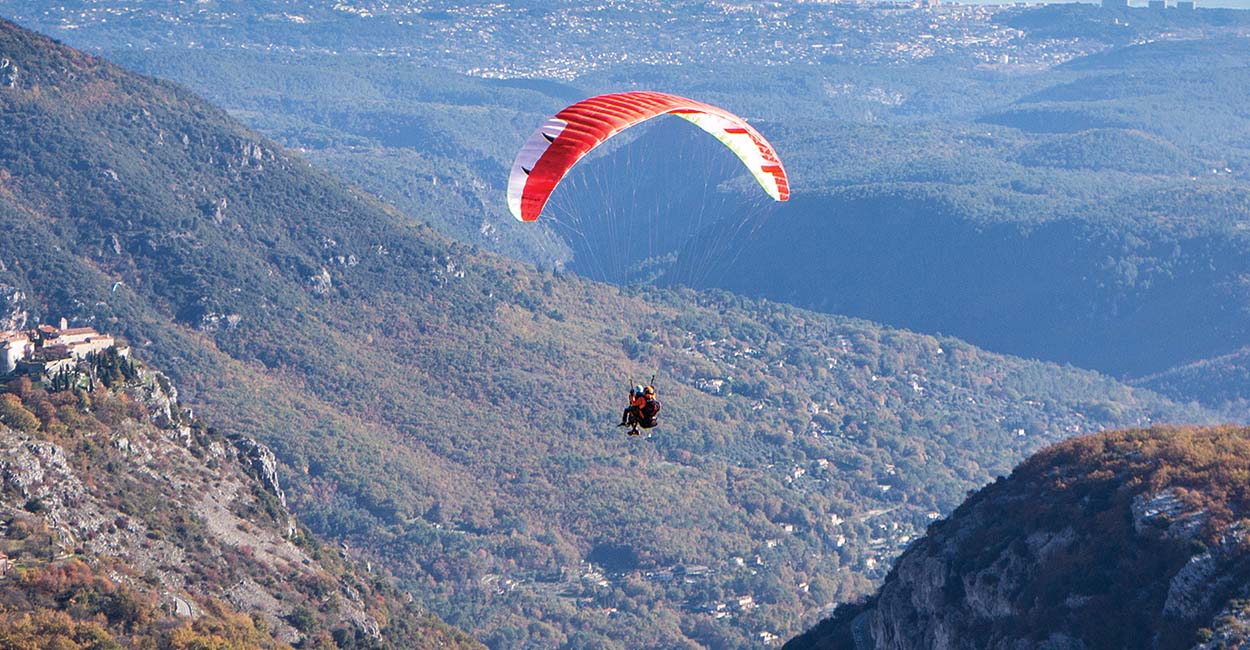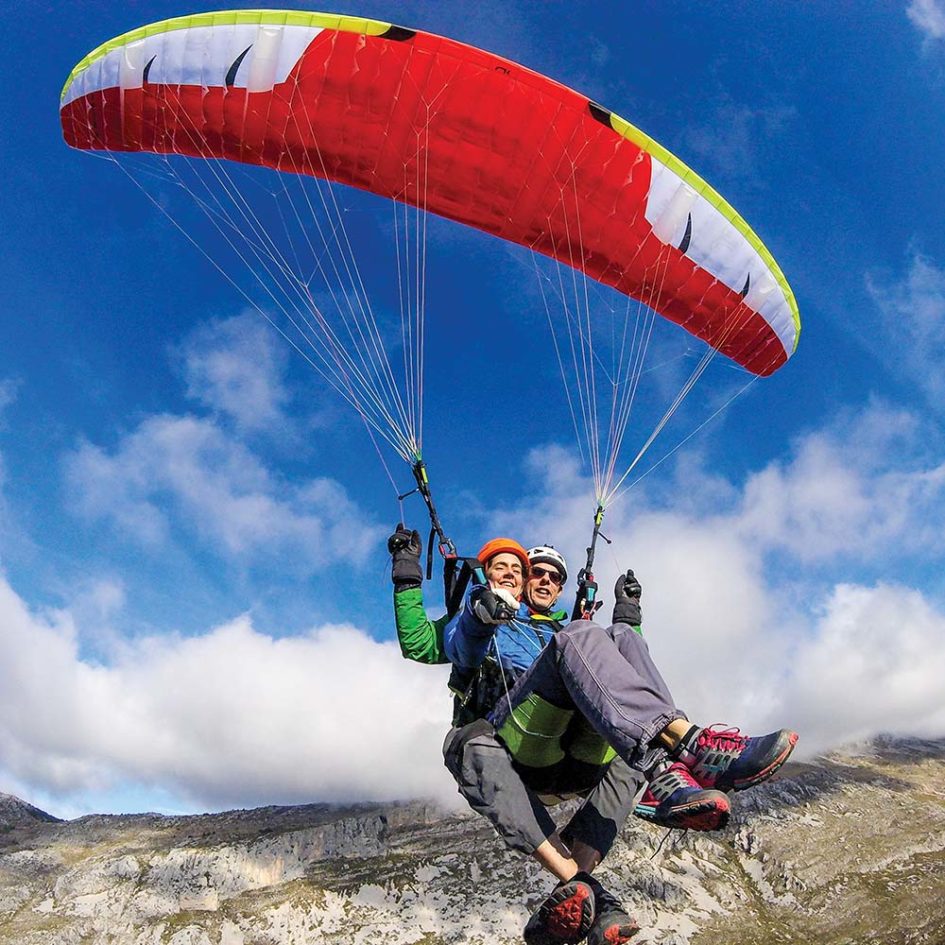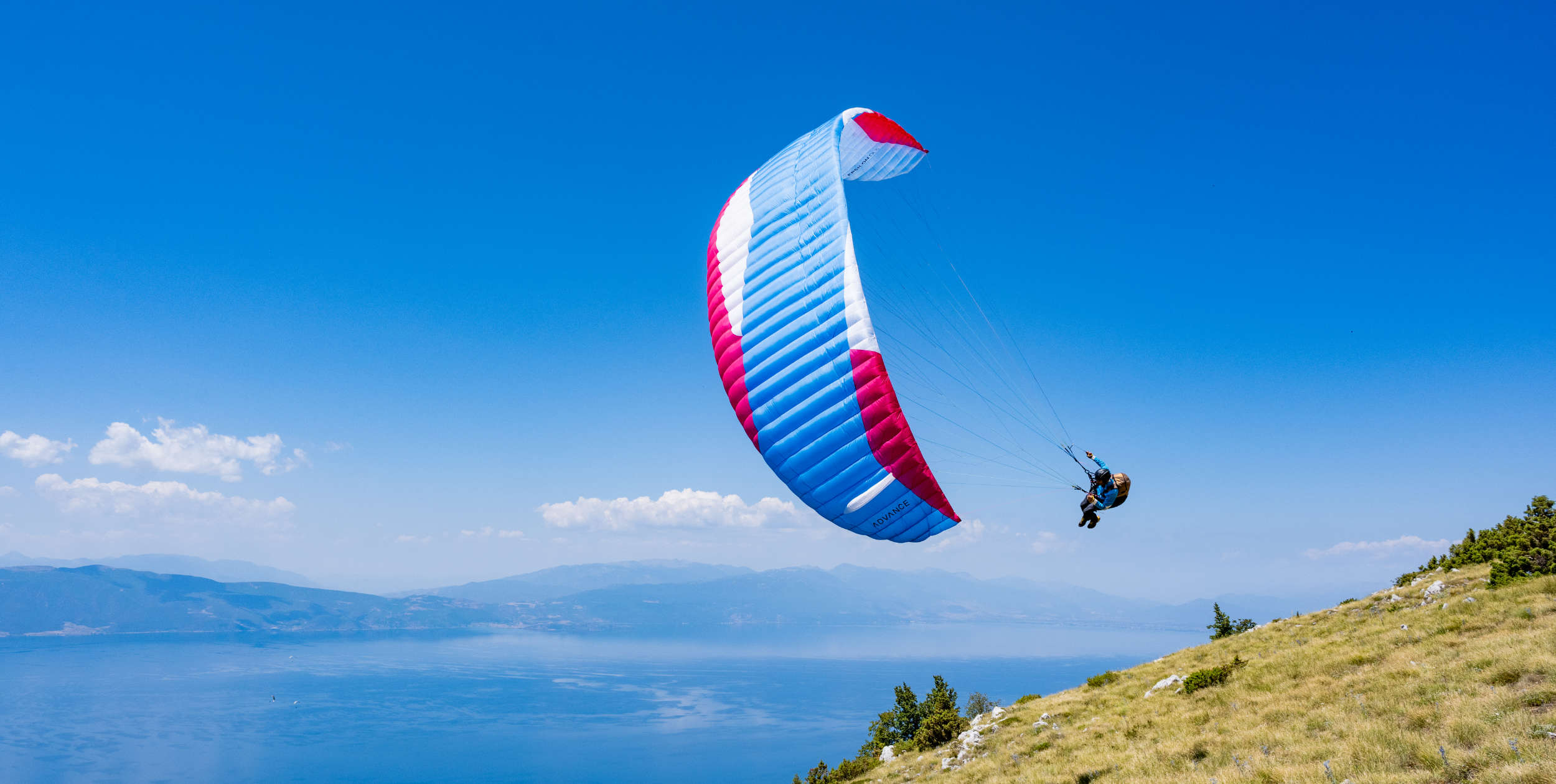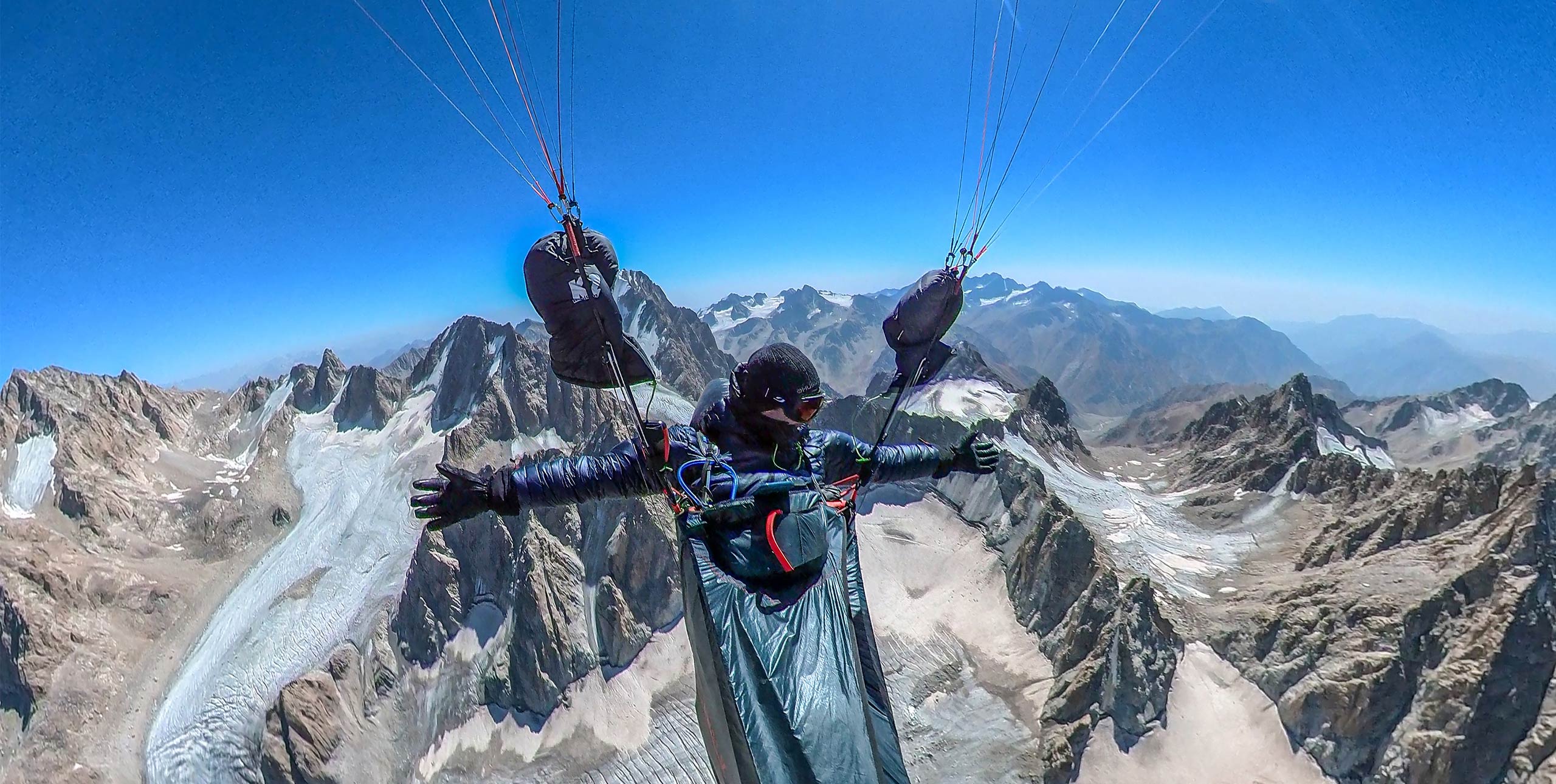
It’s the lightest and only certified single-surface tandem paraglider – and it weighs a mere 3.3kg. Marcus King took it out for a mini adventure for two
Single-skin wings have been around for a while and several have appeared on the market. I got to fly Niviuk’s single-skin glider last year, and was very impressed with its usability. So when they announced the first commercially available single-skin tandem I was keen to try it.
Billed as a wing for pleasure as well as commercial pilots it weighs an impressive 3.3kg for the 31m2 wing, covering an all-up weight range of 110-190kg. What’s more impressive is the packing size: it is positively tiny and fitted pretty easily into my GIN Yeti reversible harness, with just enough room to spare for my windproof jacket and some water.
In our testing we took another lightweight harness, and my passenger was able to carry the two helmets and other spare kit. All in all the complete tandem kit weighed in at a little over 5kg – something I really enjoyed as I walked up our local mountain on a cold crisp morning with the wing on by back. We could have reduced the weight further by using Dyneema spreaders rather than the standard ones we had to hand.
This didn’t however include a reserve, as we decided to make do without it for hike-and-fly in the winter. I would want one for more thermic flying, and some countries have made reserves mandatory for all tandem flights.
While you can get lightweight reserves from several manufacturers, and lightweight reserve risers from Neo, we couldn’t find a way to attach a reserve to the side of a reversible harness, only the front. Unless the passenger is also an experienced pilot who would be happy to deploy the reserve if needed, this isn’t a great solution.
The only lightweight options with integrated reserve pockets we found are the Sup’Air Walibi light tandem harness (1.8kg) or Kortel’s Karver II with Tandem module (2.3kg). Perhaps with gliders like this arriving on the market we will see harness makers produce even lighter tandem harnesses.

First impressions
Opening up the wing it looks like a scaled-up version of its smaller sibling, retaining the same aspect ratio of 5.5. However, Niviuk’s Dominique Cizeau told me the wing has seen a complete redesign. “If you see the two gliders together you will realise this. The concept is still the same but the design is not,” he said.
The most obvious change in the Bi version is that it has one more full cell than the original Skin, making a total of six across the span. These cells “provide great internal pressure and, therefore, consistency and responsiveness to pilot input,” according to Niviuk.
The leading edge is supported with Nitinol rods. Niviuk say these are much more robust than nylon and keep their shape even when heated. In comparison to conventional double-surface wings there are more line attachment points, with up to six across the chord. This means there are a lot of lines near the wing, although these should be lying on the wing on launch.
The lines themselves are all unsheathed aramid and all of them the natural brown colour. They do have sheathing where they are attached to the risers, with the As coloured green so you can pick them out easily. The lines are attached to the riser with Niviuk’s IKS Interlock System: small Dyneema loops rather than metal maillons are said to be 75% lighter.
The risers themselves use regular but thin webbing rather than the bootlace Dyneema risers that some mountain wings have. I’m sure the webbing will make passengers a little more comfortable.
They also have 60mm trimmers, although I found these a little fiddly to use as there didn’t seem to be enough weight on the rear risers to pull them through when released, so I had to feed them through. Querying this with Niviuk, Dominique said they have now found better trimmer buckles that are fitted on the production wings.
The brakes have very little padding and a small stiffener, and are attached using poppers rather than magnets. They run through ceramic rings rather than pulleys.
On launch
How a wing behaves on launch is always important for tandems, but is even more important in the mountains where you may have limited space and the wind can be fickle. In our limited period with the wing we used it in nil wind to a reasonable breeze. In all cases the wing behaved impeccably.
With very little wind it happily came up overhead and then needed very little control to keep it there. In stronger winds it was keen to come up overhead, but again there was no overshooting. All very calm and just what you need if you are already in an extreme situation in the high mountains.

In the air
When I flew the solo Skin I found it a bit mentally tiring as it moves around quite a bit, especially in strong air. With the larger size of the Bi Skin the first thing I noticed was how little it moved, and how little correction it needs in the air. Everything feels just that bit smoother and, well, normal. Yes, in turbulence it does occasionally feel like it is going to pitch more than a standard wing, but then it doesn’t: it just stops.
Turns are easy to initiate and the wing reacts quickly to inputs with good progressive behaviour. It’s possible, with a bit of finesse, to make flat turns with the wing then, pushing harder, make it bank and dive more in the turns. At the bottom of the weight range I felt slightly detached from the tips, but even then the wing still turned easily. Adding just a little weight made everything feel a bit more taut.
I didn’t really get the chance to thermal with it given the season, but it gave plenty of information when working a weak bubble. Flying through turbulence it seemed to drive on nicely, so I wouldn’t expect it to pitch back badly on thermal entry.
Playing with the dynamic side of the wing it is easy to build up reasonable wingovers. Unlike a conventional wing the Bi Skin 2 P returns to straight and level flight very quickly once you stop and requires very little correction – a sure sign of the wing’s inherent stability in roll and pitch.
Landing
Dominique told me that creating the new wing was, “a challenge that was not easy”. He added: “We had to erase the lack of flare capabilities that we had with our first model.”
I am happy to say they have achieved their goal. The Bi Skin 2 P is much more tolerant of flare timing than the original and it was easy to make good stand-up landings in even the lightest wind.
Conclusion
When a friend asked what I thought of the wing after my first flight my answer was, “It feels really normal.” And that’s a good thing in my book. The wow factor is the weight and that amazing packing size. After that the wing flies very much like a normal tandem.
Sure, it may not have the performance of a dual-surface wing for going XC but it is still very capable. It’s perfect for hiking and flying but also as a small tandem wing for general use. It is also especially great for flying with kids as you have little weight to carry and it feels safe and secure. It certainly found a place in our family.
****
Other options
The Bi Skin 2 P is pretty unique and nothing gets close to its weight or packing size. The nearest you can get to it with a double-skin glider are the AirDesign Hike, GIN Yeti Tandem and Nervures Arteson. They are nearer 38m2 and weigh over 5kg without harnesses. They have a similar weight range to the Bi Skin.
Little Cloud have a 31m2 version of the Bidule tandem, but this is made in full-fat cloth and weighs 6.2kg. It is certified EN D for a similar weight range.
****
Manufacturer’s specification
What Niviuk say: “Witness the birth of the first single-surface, lightweight (3.3kg) certified tandem wing. Enjoy and share your hike and fly and vol-biv adventures under the same wing.”
Pilot level: Tandem pilots
Flat area (m2): 31
Flat aspect ratio: 5.5
Take-off weight (kg): 110-190
Cells: 39 panels including 6 full cells
Weight (kg): 3.3
Certification: EN B
Niviuk.com
To stay up to date and read our reviews first, subscribe to Cross Country











